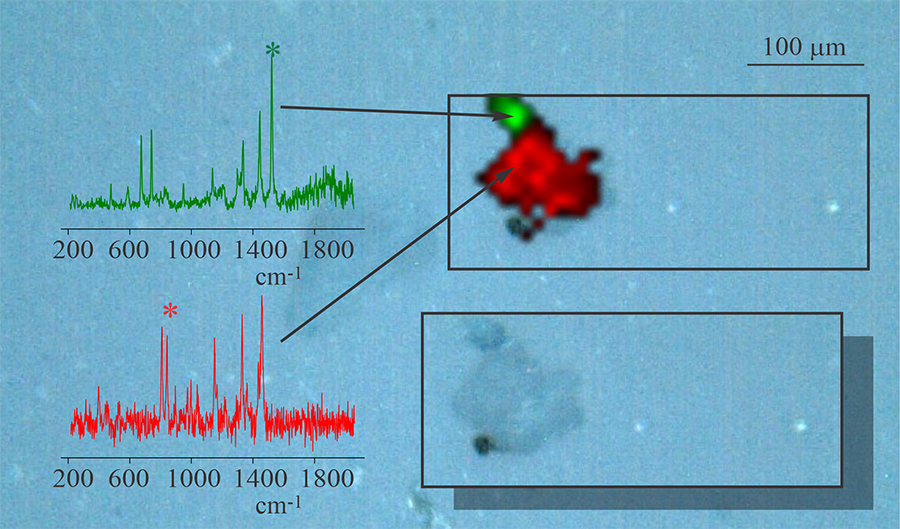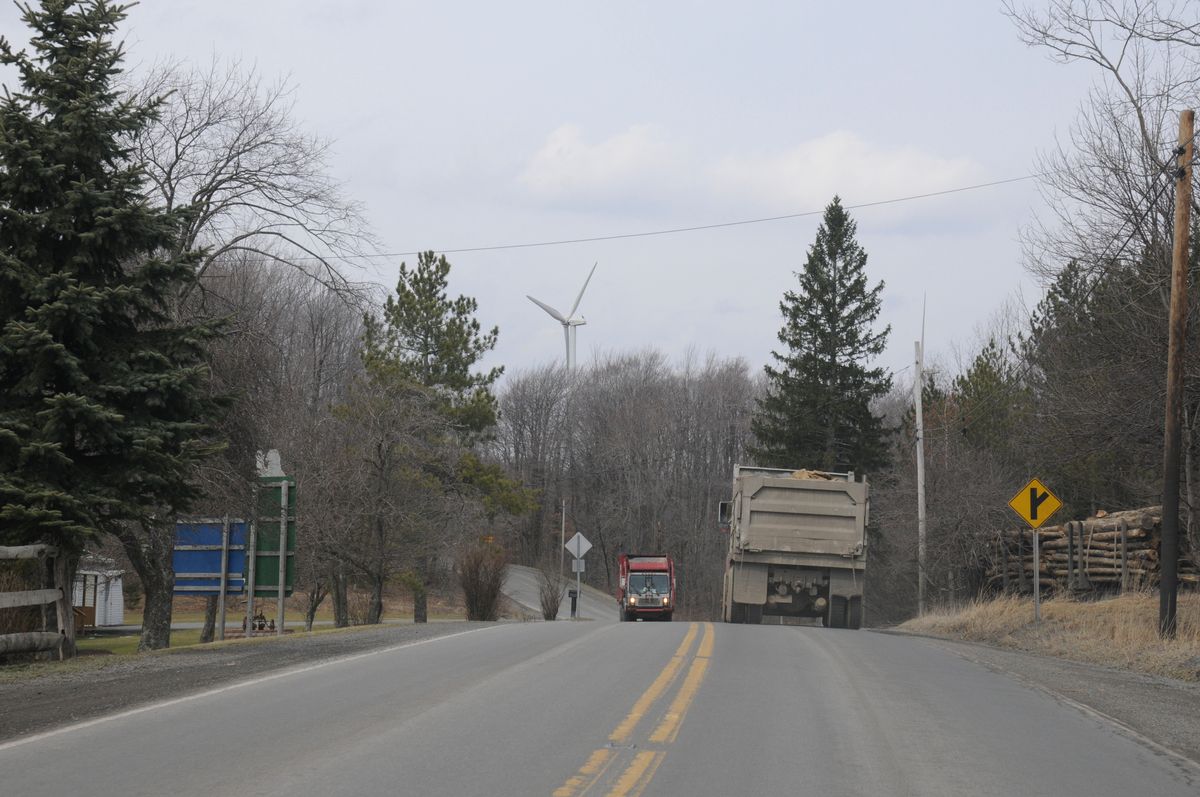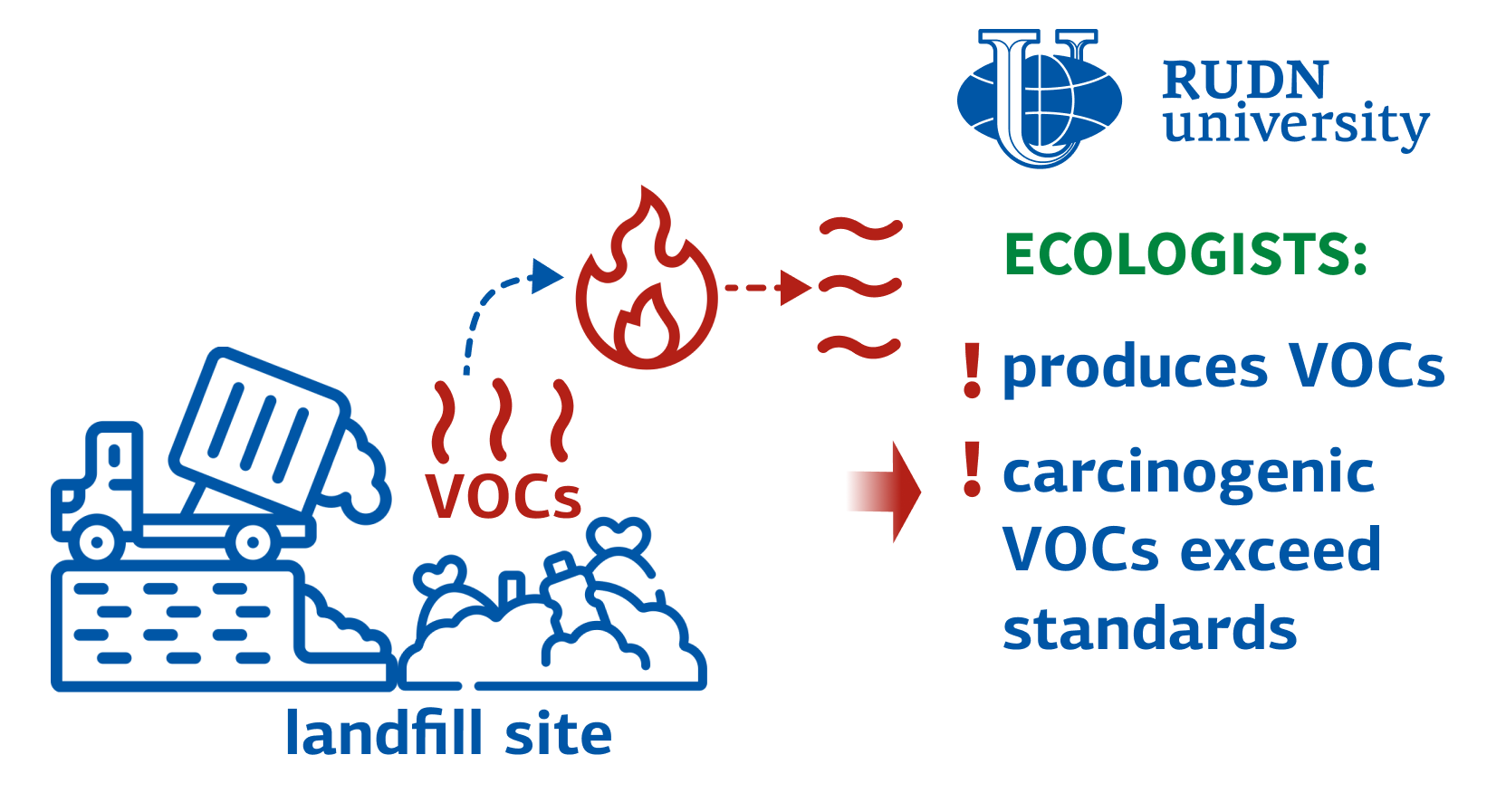A West Virginia University physical hydrology professor sees planned usage of the Seine River for several swimming events during the Paris Summer Olympics as the culmination of decades-long efforts to restore the river for recreation. Jason Hubbart, interim associate dean…
Tag: Pollution
Some landfill ‘burps’ contain airborne PFAS, study finds
Many municipal landfills “burp” gas from decomposing organic matter rather than letting it build up. And burps from buried waste containing per- and polyfluoroalkyl substances (PFAS) can release these “forever chemicals” into the air, say researchers in ACS’ Environmental Science & Technology Letters.
Decoding apples: nitrogen’s role in shaping fruit sugar content
Delving into the genetic underpinnings of fruit sweetness, researchers have discovered a novel regulatory mechanism in apples. The study spotlights MdbZIP44, a transcription factor that modulates starch and sugar metabolism in response to nitrogen levels, offering a genetic strategy to enhance fruit quality and potentially revolutionize the horticulture industry.
Technological aspects, utilization and impact on power system for distributed generation: A comprehensive survey
Abstract Nowadays, due to the utilization of an abundant amount of fossil fuels environmental pollution increases rapidly. In order to rectify such a major problem, the power sector focused on distributed generation technology which increases the quality, sustainability, and reliability…
2024 US Supreme Court case rulings: MSU experts can comment
The U.S. Supreme Court is set to deliver rulings on a slate of key cases on topics including social media regulation, government agency authority, environmental regulation, homelessness rights, drug company influence and abortion access. Many of the cases this term could affect both government institutions and how people live their private lives.

Many Microplastics in the World’s Oceans Have Likely Escaped Detection
A new study that investigated the presence of the smallest particles of microplastics (MPs) in ocean waters from the Caribbean to the Arctic found that the most abundant (and tiny) MPs in the ocean are not being detected by net tow surveys.
Revving up individual’s climate action: how our plates and wheels can drive down carbon emissions
A recent article outlines a novel approach to understanding and reducing personal carbon emissions. By comparing daily energy use to food consumption and transportations, researchers provide clear strategies for individuals to reduce their carbon footprint effectively.

Expert on rural Appalachia champions coalition building and local knowledge
Research from a West Virginia University scholar of rural Appalachia shows how even the most marginalized communities can assert power and create change when they come together to form coalitions.
New York Aquarium Unveils Powerful ‘Washed Ashore’ Experience To Raise Awareness About Ocean Plastic Pollution
The New York Aquarium is debuting a traveling art exhibit, “Washed Ashore: Art to Save the Sea” to message about how plastics polluting the environment are harmful to wildlife and people. The exhibit will be at the aquarium Friday, May 24, to Monday, Sept. 2, 2024.

Researchers offer US roadmap to close the carbon cycle
Scientists at Oak Ridge National Laboratory and six other Department of Energy national laboratories have developed a United States-based perspective for achieving net-zero carbon emissions. The roadmap was recently published in the journal Nature Reviews Chemistry.
A new report from the American Lung Association shows nearly 40% of people across the U.S. are living in areas that are heavily polluted.
Susan Anenberg, Director of the GW Climate & Health Institute, and associate professor of environmental and occupational health. Anenberg’s research focuses on the health implications of air pollution and climate change. Recently her team published two studies finding links between…
Open waste burning linked to air pollution in Northwestern Greenland
A case study on the effects of open waste burning on air quality in Northwestern Greenland calls attention to the importance of no-one-left-behind sustainable air quality monitoring in the Arctic region.
Michigan Ross Professor Investigates the Impact of Local Climate Change Beliefs and Policy
In two newly published papers, Tom Lyon, professor of business economics and public policy, explores the effect of sentiment and policy on greenhouse gas emissions.
Cleaning up environmental contaminants with quantum dot technology
Quantum dot research just won a Nobel Prize, and now, the applications for nontoxic quantum dots are being expanded. One team of researchers has designed carbon- and sulfur-based dots to help clean up the environment. They will present their results at ACS Spring 2024.
Crawfish could transfer ionic lithium from their environment into food chain
The increasing use of lithium-ion rechargeable batteries likely means more environmental contamination. Researchers have explored how lithium accumulates in crawfish, with implications for the environment and public health. They will present their results at ACS Spring 2024.
Smart Water: How AI is Clearing the Waters in Urban Rivers
Researchers have developed a new machine learning system to improve the accuracy and efficiency of sewer-river system models. This innovative approach, detailed in their latest publication, promises to significantly reduce parameter calibration time and enhance model precision in predicting urban water pollution.
UC Irvine study: vehicle brakes produce charged particles that may harm public health
Irvine, Calif., March 12, 2024 — Scientists know relatively little about particles released into the air when a vehicle driver brakes, though evidence suggests those particles may be more harmful to health than particles exiting the tailpipe.
Breathing Easy: New Study Declares Waste-to-Energy Plants a Low Health Risk
A recent study has highlighted the insignificant health hazards posed by the emissions from waste-to-energy (WtE) facilities in China’s Bohai Rim. This investigation brings to light the negligible impact of WtE plant emissions on public health, grounded in sophisticated regression analysis techniques.
Study Finds Pesticide Use Linked to Parkinson’s in Rocky Mountain, Great Plains Region
Pesticides and herbicides used in farming have been linked to Parkinson’s disease in the Rocky Mountain and Great Plains region of the country, according to a preliminary study released today, February 27, 2024, that will be presented at the American Academy of Neurology’s 76th Annual Meeting taking place April 13–18, 2024, in person in Denver and online.

Burning landfill gases is dangerous, RUDN ecologists say
RUDN University ecologists and a professor from the Jordan University of Science and Technology (JUST) have shown that the combustion of landfill gas in flares continues to pose a danger to the health of the environment and humans. Moreover, it is likely that the situation only gets worse after flaring
Study Details Toxic Elements Found in Stranded Whales, Dolphins Over 15 Years
Researchers evaluated the prevalence, concentration and tissue distribution of essential and non-essential trace elements, including heavy metal toxicants in tissue (blubber, kidney, liver, skeletal muscle, skin) and fecal samples. Findings reveal how toxicant levels relate to their sex, breed, age and other demographic factors.
Study shows UK offshores emissions through used vehicle exports
Published today in Nature Climate Change, the study found that exported used vehicles generate at least 13-53% more emissions per mile than those that are scrapped or on the road in Great Britain.
Study: Global deforestation leads to more mercury pollution
About 10 percent of human-made mercury emissions into the atmosphere each year are the result of global deforestation, according to a new MIT study.
University of Kentucky scientists develop eco-friendly magnet to battle microplastics
Plastic pollution is a pressing environmental issue, and University of Kentucky Martin-Gatton College of Agriculture, Food and Environment researchers are leading the charge with an innovative solution.
Monitoring of natural gas compressor stations underestimates health risks to nearby communities
Gaps in state and federal monitoring mean rural, poor, non-white and elderly communities disproportionally experience harmful health effects from compressor station pollution.
An eco-friendly solar-driven protocol solves water-oil separation
Researchers have developed a novel oil separation technique using solar thermal energy that is environmentally friendly, cost-effective, and highly efficient.
Navigating Childhood Asthma: Insights From a Pediatric Pulmonologist
As the seasons transition from warm fall nights to cool and wintry evenings, children with asthma often experience a rise in wheezing or chest tightness, because weather changes and cold temperatures are often asthma triggers.
Concrete as CO2 trap – right at the plant
After their production, which emits a lot of carbon dioxide, cement-based building materials such as concrete absorb the climate gas again – a process that takes decades and can hardly be controlled.
Commonly Used Herbicide is Harmful to Adolescent Brain Function
UC San Diego Herbert Wertheim School of Public Health and Human Longevity Science researchers report in a new study that exposures to two of the most popular herbicides were associated with worse brain function among adolescents.
Urban Pollution Changes Properties of Lung Cells, Causes Fibrosis
Article title: Complex urban atmosphere alters alveolar stem cells niche properties and drives lung fibrosis Authors: Randa Belgacemi, Bruno Ribeiro Baptista, Grégoire Justeau, Marylène Toigo, Andrew Frauenpreis, Rojda Yilmaz, Audrey Der Vartanian, Mathieu Cazaunau, Edouard Pangui, Antonin Bergé, Aline Gratien,…
Electrifying vehicles in Chicago would save lives, reduce pollution inequities
If the Chicago region replaced 30% of all on-road combustion-engine vehicles — including motorcycles, passenger cars and trucks, buses, refuse trucks and short- and long-haul trucks — with electric versions, it would annually save more than 1,000 lives and over $10 billion, according to a new Northwestern University study.
World can now breathe easier
Global, population-weighted PM2.5 exposure — related to both pollution levels and population size — increased from 1998 to a peak in 2011, then decreased steadily from 2011 to 2019, largely driven by exposure reduction in China and slower growth in other regions, new research shows.
Rubber plumbing seals can leak additives into drinking water, study says
Rubber seals inside some plumbing devices contain additives that contribute to their flexibility and durability, but these potentially harmful compounds can leak into drinking water, according to a small-scale study in ACS’ Environmental Science & Technology Letters.
Bit by bit, microplastics from tyres are polluting our waterways
Urban stormwater particles from tyre wear were the most prevalent microplastic a new Griffith-led study has found.
Taxpayers should foot the bill if EU demands efficient removal of pharmaceuticals from wastewaters
Public sector should pay if EU demands efficient removal of pharmaceuticals from wastewaters, according to researchers at the Centre for Antibiotic Research, CARe, at the University of Gothenburg.
ACS Fall 2023 media briefing schedule
Recordings of media briefings will be posted by 10 a.m. Eastern Time on each day. Watch recorded media briefings at: www.acs.org/ACSFall2023briefings.
Tubing and swimming change the chemistry and microbiome of streams
As Labor Day approaches, many people will go tubing and swimming, but do these delightful summertime activities impact streams and rivers? Today, scientists report that recreation can alter the chemical and microbial fingerprint of waterways. They will present their results at ACS Fall 2023.
Cleaning water with ‘smart rust’ and magnets (video)
Pouring flecks of rust into water usually makes it dirtier. Now, researchers have developed special iron oxide nanoparticles called “smart rust” to trap estrogen hormones that are potentially harmful to aquatic life. They will present their results at ACS Fall 2023.
Benefits of Electric Stoves on Health and Environment in Ecuador
An international team of researchers led by UC San Diego Herbert Wertheim School of Public Health and Human Longevity Science investigated the health and environmental impacts of a program in Ecuador that put induction stoves in 750,000 households.
UC Irvine receives grant to study lead exposure effects on children’s learning, behavior
The Program in Public Health at the University of California, Irvine has received a five-year, $2.7 million grant from the National Institute of Environmental Health Sciences to research the connection between low-level lead exposure during pregnancy and early childhood and children’s school performance and behavior in Santa Ana, California.
GW Expert Available: UN Committee Meets This Week on Treaty to End Global Plastic Pollution
Talks are underway this week to create a global treaty that would bring an end to plastic pollution. According to The Associated Press, a United Nations committee is meeting in Paris to work on what would be a landmark agreement that…
Scientists discover microbes in the Alps and Arctic that can digest plastic at low temperatures
Finding, cultivating, and bioengineering organisms that can digest plastic not only aids in the removal of pollution, but is now also big business.
Air Quality and Lung Cancer in Wayne County, Mich.—a Large Urban/Suburban Study
Lung cancer is the most common cause of cancer-related deaths in North America. Although cigarette smoking remains the main risk factor for lung cancer development, the importance of environmental factors such as pollution and poor air quality is becoming increasingly recognized.
Marine Seagrass Meadows Show Resilience to ‘Bounce Back’ After Die-Offs
A study in Florida Bay, one of the largest global contiguous seagrass systems, examined if a phytotoxin that accumulates as seagrass ecosystems become more enriched in nutrients prevents a marine seagrass, turtlegrass, from recruiting into open bare sediment following die-off events. While they do “bounce back,” long-term monitoring indicates the timeframe for recovery after major die-off events is at least a decade. Turtlegrass can successfully recruit into open bare sediment following die-off events due to biomass partitioning.
Treating Polluted Water with Nanofiber Membranes
In Biointerphases, researchers develop a fabrication method to increase the efficacy and longevity of membrane separation technology. The team created a nanofibrous membrane with electrospinning, in which a liquid polymer droplet is electrified and stretched to make fibers, and increased the roughness of the membrane surface by loading it with silver nanoparticles. In water, this rough surface promotes a stable layer of water, which acts as a barrier to prevent oil droplets from entering the membrane. The technology is greater than 99% effective at separating a petroleum ether-in-water emulsion.
GW Experts Available: EPA Proposes Historic Auto Pollution Limits That Would Boost EV Sales
The Environmental Protection Agency announced Wednesday plans that would ensure two-thirds of new passenger cars and a quarter of new heavy trucks sold in the United States are all-electric by 2032. According to The New York Times, “if the two rules…
Scientists discover a way Earth’s atmosphere cleans itself
Irvine, Calif., April 7, 2023 — Human activities emit many kinds of pollutants into the air, and without a molecule called hydroxide (OH), many of these pollutants would keep aggregating in the atmosphere. How OH itself forms in the atmosphere was viewed as a complete story, but in new research published in Proceedings of the National Academy of Sciences, a research team that includes Sergey Nizkorodov, a University of California, Irvine professor of chemistry, report that a strong electric field that exists at the surface between airborne water droplets and the surrounding air can create OH by a previously unknown mechanism.
FAU Developed AUTOHOLO Shows Potential as Red Tide Warning System
Current methods to monitor red tide are limited. Using AUTOHOLO, a new autonomous, submersible, 3D holographic microscope and imaging system, a study is the first to characterize red tide in the field and breaks new ground for monitoring harmful algal blooms.
What can we do about all the plastic waste?
The Institute for the Cooperative Upcycling of Plastics (iCOUP) is helping to address the plastic waste accumulation problem by developing the science needed to turn used plastic into valuable materials.
Pulsing ultrasound waves could someday remove microplastics from waterways
Colorful microplastics — less than 5 mm wide — drift along under the surface of most waterways. Now, a team reports a two-stage device made with steel tubes and pulsing sound waves to remove these potentially harmful particles from water samples. They will present their results at ACS Spring 2023.